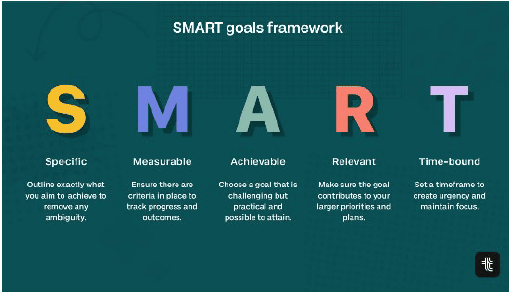Welcome to The Smart Savings Strategies guide. If your goal is to enjoy financial stability, grow your hard-earned money, and create an effective savings approach that suits your unique lifestyle, you’re in the right place. In this guide, we’ll explore the fundamental building blocks of saving for retirement, building a nest egg, and overall investment strategies. By implementing these intelligent savings solutions, you can move closer to achieving the financial goals that matter most to you.
Throughout this guide, you’ll also discover valuable links to other relevant resources on this site—like our Retirement Planning Basics or the Pros and Cons of Annuities. Plus, you’ll encounter select external references that provide credible information and expand on some of the concepts we introduce. Let’s dive in.
1. Understanding the Importance of Saving Early
 One of the core principles of The Smart Savings Strategies is the power of starting early. Time is an invaluable asset. The earlier you begin building a nest egg, the more likely your money will grow through compounding interest. This means that any returns you earn can be reinvested, further accelerating your growth.
One of the core principles of The Smart Savings Strategies is the power of starting early. Time is an invaluable asset. The earlier you begin building a nest egg, the more likely your money will grow through compounding interest. This means that any returns you earn can be reinvested, further accelerating your growth.
Furthermore, many financial experts recommend prioritizing an emergency fund—even before delving into advanced investment strategies. Keeping three to six months’ worth of expenses in an easily accessible savings account safeguards you against unexpected financial hits.
If you’re curious about starting small, visit our Smart Saving Strategies Overview to see how to build a sustainable saving habit. Additionally, Investopedia offers a great article on compound interest for further reading. If you’re curious about starting small, visit our Smart Saving Strategies Overview to see how to build a sustainable saving habit. Additionally, Investopedia offers a great article on compound interest for further reading.
2. Setting Clear Financial Goals
The next step in adopting Clever Ways to Save is establishing a clear vision for your finances. Are you saving for retirement, planning a dream vacation, or hoping to buy a house? Defining your objectives guides your budgeting and helps maintain motivation.
SMART Goals
 Specific: Pinpoint exactly what you want (e.g., “I want $300,000 in my retirement account by age 60”).
Specific: Pinpoint exactly what you want (e.g., “I want $300,000 in my retirement account by age 60”).
Measurable: Keep track of progress with numbers and deadlines.
Achievable: Be realistic; set targets within reach but still challenging.
Relevant: Ensure the goal aligns with your broader life plans.
Time-Bound: Assign a completion date to maintain a sense of urgency.
Check out our Retirement Planning Basics with more guidance on aligning your savings goals with your long-term retirement timeline. Setting SMART goals creates clarity and purpose in your effective savings approaches.
3. Crafting a Realistic Budget
Once you have well-defined objectives, it’s time to craft a budget that aligns with The Smart Savings Strategies. A realistic budget captures your monthly income, expenses, and savings targets.
Moreover, budgeting helps you identify any gaps in your spending habits, ensuring that each dollar has a purpose, be it paying off debts or building an emergency fund.
The 50/30/20 Rule
A popular guideline is the 50/30/20 rule, where:
• 50% of your income covers essentials (housing, utilities, groceries)
• 30% is allocated to discretionary spending (entertainment, dining out)
• 20% goes directly into savings or debt repayments
Adjust these percentages based on your unique situation, particularly if you’re focused on achieving financial goals sooner. For more help, you might consult an advisor or read through our Financial Planning Must-Haves to see how a strategic budget fits into your broader financial picture.
4. Maximizing Investment Opportunities
Intelligent savings solutions often involve selecting suitable investment strategies that match your risk tolerance and time horizon.
Stocks and Bonds
Investing in stocks offers growth potential, while bonds can provide relative stability and predictable interest income. Balancing these can help you ride out market volatility, especially if you’re in it for the long haul. Learn more about balancing stocks and bonds in our Investment Basics 101.
Annuities and Other Retirement Vehicles
Many people also consider annuities for long-term security. If you want stable payouts in retirement, our Pros and Cons of Annuities breakdown can help you assess whether they align with your financial stability goals. Additionally, you may explore external resources like FINRA’s guide to annuities for more in-depth coverage.
Real Estate and REITs
Real estate can be an appealing route to generate consistent rental income or to flip properties for profit. Alternatively, Real Estate Investment Trusts (REITs) are perfect for those who want exposure to the property market without directly managing a property.

5. Leveraging Tax-Advantaged Accounts
A crucial element of The Smart Savings Strategies is leveraging accounts that offer tax benefits:
•401(k) or 403(b) Plans: Offered by many employers, these plans often include matching contributions—essentially free money.
•IRA and Roth IRA: IRA contributions can be tax-deductible, while Roth IRAs feature tax-free withdrawals in retirement.
•Health Savings Account (HSA): If you have a high-deductible health plan, contributing to an HSA allows for tax-free contributions, growth, and withdrawals (if used for qualified medical expenses).
For more details on how these tax-advantaged accounts work, visit our Retirement Planning Basics. Or consult the IRS official website for up-to-date regulations and contribution limits.
6. Automating Your Savings
One of the simplest, Clever Ways to Save is to pay yourself first through automation. By setting up recurring transfers from your checking account to your savings or investment accounts, you ensure consistent contributions. This eliminates the temptation to skip a month or divert funds elsewhere.
Therefore, automation fosters discipline and helps you adhere to your budget and reach your goals faster. Whether you’re saving for retirement or building short-term reserves, consistency is key.
7. Staying Motivated and Adapting
Financial success is rarely a straight line. Life changes—such as marriage, children, or career shifts—can shift the landscape, requiring you to revisit your saving plan. It’s vital to remain flexible and continue learning. Hence, reviewing your budget and goals at least once a quarter keeps you on track. Stay Informed: Continue reading articles like this and exploring Achieving Financial Goals resources to stay updated on market trends and new investment products.
Final Thoughts
The Smart Savings Strategies require discipline, clarity of goals, and a willingness to adapt over time. By cultivating effective savings approaches, leveraging investment strategies, and regularly revisiting your plan, you create a sustainable path toward financial stability. Remember, it’s never too late to start. Every penny you save and invest today moves you closer to achieving your financial goals tomorrow.
Key Takeaways
1. Start Early: Compounding interest benefits those who begin saving sooner rather than later.
2. Define Clear Goals: Use SMART objectives to maintain focus and motivation.
3. Craft a Realistic Budget: Ensure your monthly spending aligns with your savings and investment plans.
4. Diversify Investments: Mix stocks, bonds, annuities, and real estate to balance risk and growth.
5. Automate Your Savings: Consistent, scheduled deposits help you stay disciplined over the long haul.
Questions to Ponder
1. What Are My Long-Term Financial Goals?
2. How Much Risk Am I Comfortable Taking in My Investments?
3. Am I Leveraging All Available Tax-Advantaged Accounts?
4. How Often Am I Reviewing My Budget and Adjusting for Life Changes?
5. Do I Need Professional Guidance to Align My Strategies with My Objectives?
Next Steps
• Refine Your Budget: Identify areas where you can reduce spending and increase savings.
• Explore Annuities: Check out our Pros and Cons of Annuities to see if a guaranteed income stream fits your retirement plan.
• Review Tax-Advantaged Accounts: Ensure you’re maximizing 401(k) matches, IRAs, and HSAs.
• Stay Educated: Keep reading and learning about financial topics on our Retirement Planning Basics page and other reputable sources.
Book A Free Consultation
Ready to take your intelligent savings solutions to the next level? Don’t go it alone. Book a Free Consultation now, and let’s work together to build a customized approach tailored to your life ambitions and unique circumstances. Take control of your future today.

